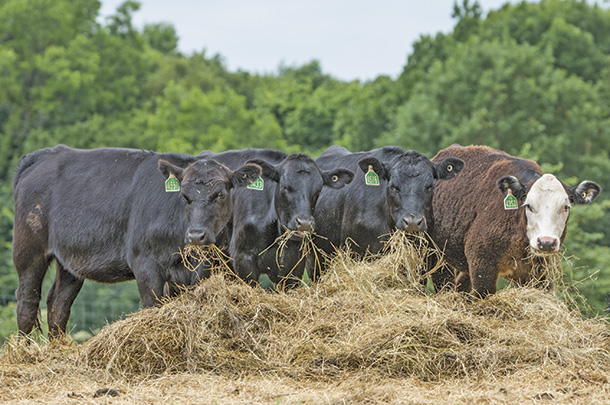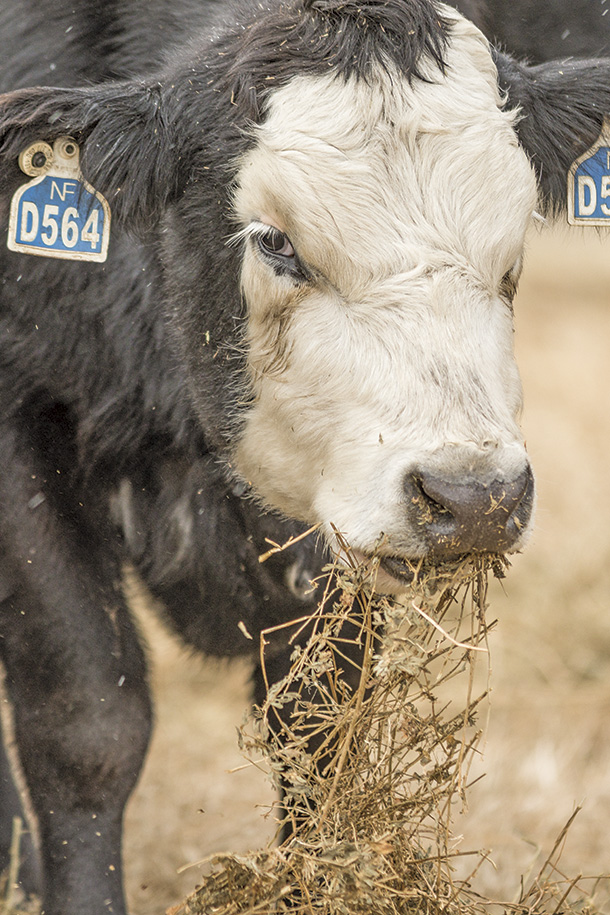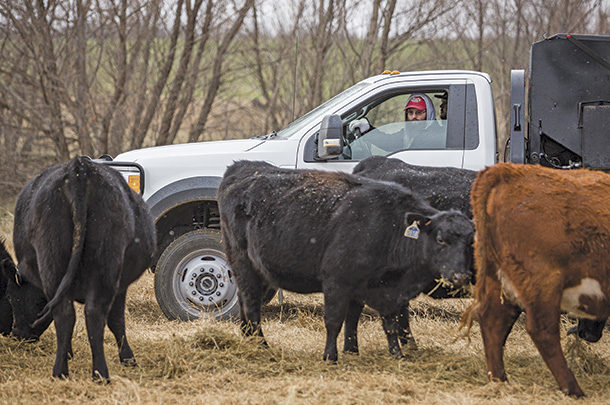It’s “officially fall” for most producers. The temperatures are dropping; calves are being weaned; culls are getting shipped; marketing plans are being executed.It’s a turning point in our production cycle – the cultivation of a year’s worth of work and investment. Simultaneously, and much more quietly, another big transition is taking place in our pastures and within our grazing ecology – forage dormancy.
As the vibrant green leaves of grass and other forage plants fade to brown, both nutrient density and availability are declining already, leading most managers to start thinking about winter supplementation. The phones of feed mills, extension agents and consultants alike are beginning to ring with the resounding question, “What should I feed my cows this winter?” Ultimately, and consistently, I meet this question with yet another question: “What is your forage base like?”
The answer to this question can help a producer better understand both what and how to supplement and the fundamental difference between feeding to supplement the grazing diet and feeding to substitute for the grazing diet.
Substituting
We often call all winter feeding “supplementing,” but we aren’t always merely supplementing the diet. Substitutional feeding is necessary when you are short on both forage quantity and quality. It is commonly necessary in introduced pasture systems, especially bermudagrass. Dormant bermudagrass doesn’t hold its nutritional quality well very far into dormancy, and that window of opportunity is shortened even further by weather events that degrade the structural integrity of the plant (i.e., a wet winter). Even properties with native pastures can find themselves in a forage deficit for the winter months if there aren’t sufficient stockpiled pastures, or forage yield within those pastures, to support their stocking rate until spring greenup.
 Monitoring animal body condition score and manure scores can help you know when to adjust feeding up or down, either in volume or nutrient density. Photo courtesy of Noble.
Monitoring animal body condition score and manure scores can help you know when to adjust feeding up or down, either in volume or nutrient density. Photo courtesy of Noble.Without the availability of stockpiled forage, or the availability of cool-season pasture to supplement dormant warm-season forages, it’s difficult to meet dry matter intake (DMI) requirements even for a dry cow. Producers in this situation find themselves needing to counteract their shortage of forage availability by feeding hay to meet both the necessary roughage intake and nutrient requirements.
How to alleviate substitute feeding
Substitutional feeding can be defined as “feeding hay when you run out of grass” and can often – but not always – be an indicator that you’re a little bit overstocked. Managing your herd numbers and your grazing so you have sufficient forage to stretch you through those dormant months to the next growing season is a balancing act with a learning curve that can be costly. The forage you have stockpiled by September is going to have to last you likely until March or April, so be strategic about stocking your ranch.
The consequence of needing to substitute toward the end of winter is expensive – in both the hay itself and the time and labor it takes to distribute feed. In a wet winter that breaks down the integrity of dormant plants, especially those of warm-season, introduced forages, substituting a portion of a grazing diet with hay may be a necessary evil. A producer can even use the need for hay to their advantage by utilizing techniques such as bale grazing to help accumulate litter in sparse grazing areas to promote more forage yield in the future. Remember: The goal with any winter feeding strategy is always to optimize and reduce where you can, not to eradicate it altogether.
Supplementing
Supplementation is exactly as it sounds: a nutrient-dense feed provided as a supplement to a nearly complete diet. Supplementation is almost impossible to avoid in grazing scenarios devoid of a cool-season forage component. Regardless of your calving season, production schedule or forage base (native range versus introduced pasture), dormant standing forage in December-February is very depleted of nutrients. The forage quantity may be there, but the quality likely won’t be sufficient to meet your livestock’s needs at that time. At this point, you may identify your limiting nutrient (which will differ depending on class of animal, stage of production, etc.) and then select either a protein or energy supplement that best meets the deficit during those winter months.
How to alleviate supplemental feeding
 Hay can be used as either substitutional or supplemental feed, depending on your goals, your needs and the quality of hay – always test your hay to determine its best use. Photo courtesy of Noble.
Hay can be used as either substitutional or supplemental feed, depending on your goals, your needs and the quality of hay – always test your hay to determine its best use. Photo courtesy of Noble.
One way to cut down on supplemental feeding is to arrange your calving season to be as in-sync with nature’s supply of forage and nutrition as you possibly can. A cow calving in January will certainly have requirements that far exceed what dormant pasture can provide, but a March-calving cow will require far less supplement to get her through those winter months. Utilize grazing and burning to your advantage so you have fresh forage to stockpile going into your first frost, as opposed to relying on just summer-rank forage. This will provide higher nutrient densities to graze going into the winter.
Having a cool-season component to your grazing is by far the most beneficial tool to helping alleviate some supplemental feed costs. You can interseed, plant a cover crop or even just manage pastures to encourage some cool-season growth in those winter months.
Understanding the difference between substitutional feeding and supplemental feeding is an easy diagnostic tool to help assess your grazing management, stocking rate adjustments and overall profitability. Winter feeding is, for most livestock operations, the largest investment in your herd’s nutrition every year. Thus, understanding what drives the type of winter feed you choose, how much of it you feed and why it’s necessary can help you make decisions that benefit both the health and ecology of your pastures as well as your overall bottom line.
Monitoring animal body condition score and manure scores can help you know when to adjust feeding up or down, either in volume or nutrient density. Photo courtesy of Noble.
Experiment with different methods of feeding, including bale grazing, to get the best bang for your buck out of your winter feed source. Photo courtesy of Noble.
Hay can be used as either substitutional or supplemental feed, depending on your goals, your needs and the quality of hay – always test your hay to determine its best use. Photo courtesy of Noble.











